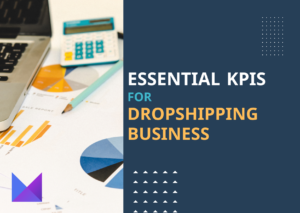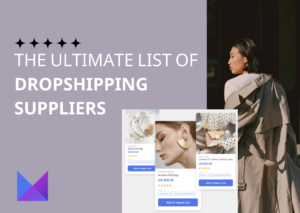Indie brands are exploding onto the beauty and fashion scene. While they may start small, some grow to be worth billions of dollars.
It’s no wonder as statistics show that about 93% of Indie companies are owned by women and 90% of shopping for personal care products is done by women. Indie makeup brands and other types of indie brands are uniquely positioned with their finger on the pulse of the industry. They know what their customers want and are savvy enough to give it to them.
So what are Indie clothing and beauty brands and what is interesting about their products for a dropshipping business? Let’s find out.
What Does Indie Mean?
Wait, let’s back up a second, what is an Indie brand, anyway? While Indie brands are as diverse as the people who found them, there are a few qualities that define them as a company. Let’s look at them here.
Funded Independently
Indie brands start out by funding themselves independently. The founders put up the capital needed to get their business off the ground or come up with creative methods of obtaining said capital. This can range from methods like pre-sales, crowdfunding, or nurturing valuable partnerships.
Though they are often left scrambling and hanging on by their fingernails, this approach also works well with consumers. People these days prefer to support small businesses making a go of it over large mega-companies.
Passionate Purpose
Indie brands are often headed by one founder (or pair of co-founders) with a passionate purpose. They build their brand around products that they believe will help people and provide value — not just products with which they can make a quick sale.
A Focus on Design
Back in the old days, shoes, clothes, and many other products were crafted by artisans highly skilled in their craft. Indie brands are reminiscent of this. They focus on quality and that includes not just their products but also their marketing and right down to the design of their packaging.
Small Quantities
An Indie brand is different from a tech startup or software company in that they sell a physical product. However, because of their limited resources, they can’t mass produce their products. This gives them an exclusive feel that also appeals to their customer base.
This also means they can be more nimble with their production. If a certain product isn’t appealing to their audience, they can scrap it and go in a different direction without having to dispose of a large inventory.
Innovative Marketing
Indie brands can’t afford to blast advertisements across television or radio. Instead, they turn to more inexpensive methods like content marketing and social media to market their products to a more niche audience.
This also allows them to connect with their audience in a unique way. Through social media, brands can actually ask customers what they think about a product or what they want to see in a new product and customers can answer. This gives them a unique edge over big companies trying to please everyone — which ultimately pleases no one.
Why Should You Sell Indie Products?
Indie brands connect with today’s consumers in a unique way. Millennials, in particular, are looking for an experience, not just a product.

Just browse YouTube and you’ll see loads of videos of people unboxing products they’ve bought from an Indie brand. YouTube personalities enthusiastically promote their favorite brands, gushing over the lovely packaging and delighting in the personal touches that the maker added to the product.
And since Indie brands make products for a highly niche audience, there is literally something for everyone. For example, Indie makeup brands that specialize in products for women of color. Or Indie clothing brands that focus on hipster clothing or another particular look that won’t necessarily be found in a big clothing store.
Additionally, the uniqueness of Indie products appeals to consumers. People don’t like the idea of their clothing or cosmetics being the same as everyone else’s. They want to buy unique products.
The success of Etsy shops shows this. Small businesses can handmake or create just about anything and sell their artistry on this online marketplace — and customers are eating it up.
There really isn’t any good reason not to be selling indie products in this day and age.
How to Add Indie Products to Your Dropshipping Business
For eCommerce business owners looking to stock their e-shelves with Indie products, Modalyst is a great place to start. It is one of the only marketplaces out there from which it is easy to source Indie products for an online store.
They have a specific Independent Brands Marketplace which makes searching for dropshipping products a breeze. All suppliers are thoroughly vetted and they take care of commissions, shipping, and returns policies so everything is uniform.
All the suppliers are based in the U.S. or Europe, rather than China or India. This means shipped products arrive within a few days rather than a few weeks. This, as you know, is key for a dropshipping business. Today’s consumers expect to see their orders in a timely fashion.
Hingeto is another platform where business owners may have some luck connecting with Indie brands for dropshipping.

There are a number of other marketplaces that work with Indie brands, but most of them sell wholesale to business owners. These include
- Faire: which prides itself on connecting retailers to the makers
- EcoCult: which will only accept ethical brands as part of their commitment to sustainability
- The Indé Project: facilitates connecting Indie designers with retailers and helping them grow their businesses
Getting Started with Dropshipping Indie Products
For business owners looking to expand their eCommerce stores, adding Indie products is a great way to do it. Customers are looking for unique products and unique experiences. By connecting with Indie brands, businesses can do both.





